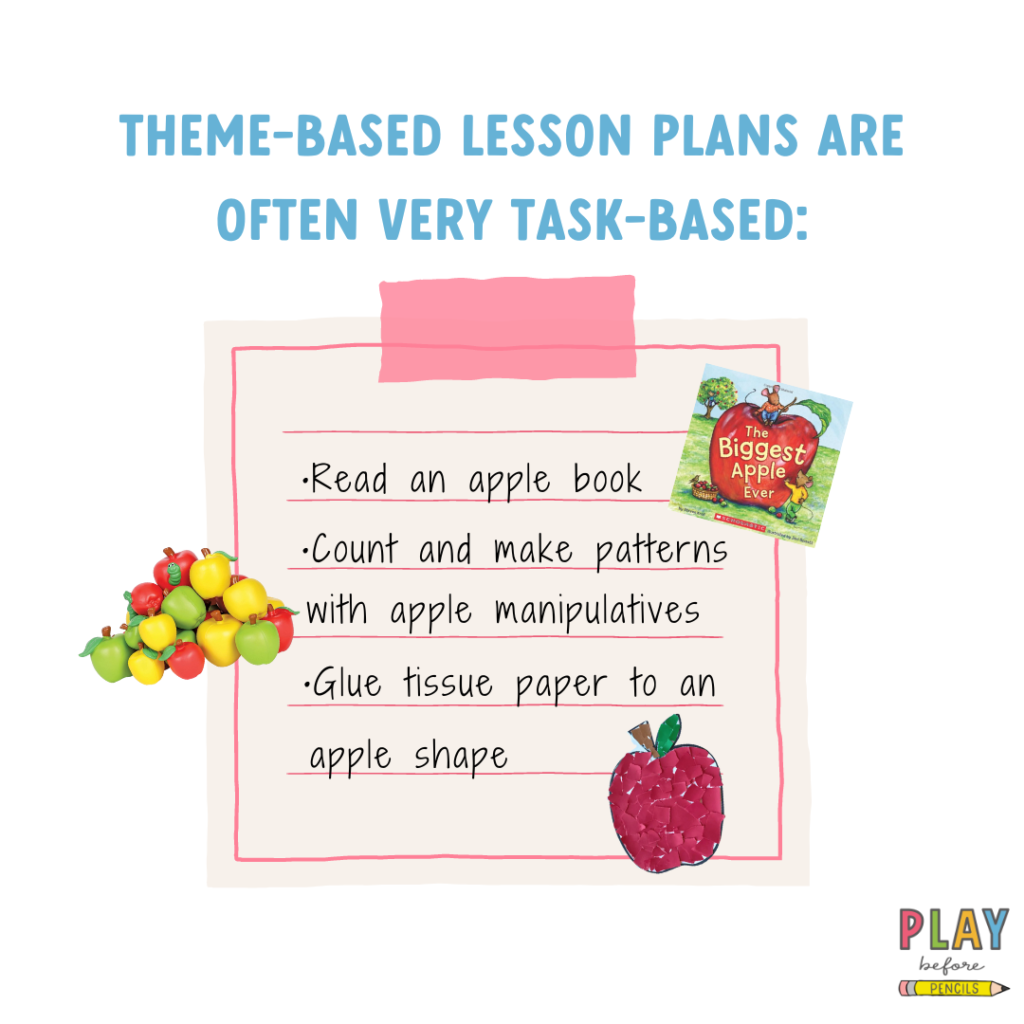Themes are a staple for most early child education centers. When I was a new teacher, I relied heavily on themes for lesson planning. On the surface, themes might seem like a simple foundation to then teach academic concepts in a fun and engaging way, but have you ever considered that they might actually be limiting what your students are capable of learning? Let’s take a look:
In most classrooms, themes are teacher chosen and teacher directed. They are often little more than an avenue by which we can plan lots of content ahead of time—it’s convenient for US but it neglects the interests of the KIDS. I don’t know about you, but I’ve had themes that simply didn’t capture the attention of my students and then I was left attempting to convince them that they DID want to learn about my chosen theme, trying to salvage the rest of a month of planning, and scrambling to switch things up. In the end, it left me even more stressed out than if I’d gone into the month without a plan at all! It is impossible to plan head with themes and still honor the interests of the children. If the ideal is child-led learning, then we need to truly lean into that by letting the children lead.
In order to take advantage of the rich learning experiences we want for our students, we have to embrace a more responsive and dynamic way of planning. This doesn’t mean that we necessarily have to eliminate themes altogether, but that we let the children guide us what they’ll be through their interests. Initially, it can feel a little tricky, or even out of control, to step away from the idea of planning a whole year (or even month) at a time, but the benefits to the kids can be tremendous! Learning about topics they are interested in results in learning that goes deeper and sticks longer.
When we look at how to make a shift away from traditional themes, we first have to consider the way we are used to planning:

The idea behind task-based plans is usually to incorporate academic skills within activities that we think will be fun for kids, while still controlling what happens. We *do* want to plan for skill acquisition, but it takes a shift in thinking to see how skills can be developed in other ways.
We often forget that play is full of academic learning that we barely even have to plan for–a theme isn’t necessary for this learning to take place. If we have chosen wisely the kinds of materials our students have access to, we can step back and let the learning unfold. Play is an incredible teacher!
However, utilizing play as a primary teacher of skills does not mean that we go into each day without a plan. I like to create a “skeleton plan” that covers all of the basics (and will make admin happy if they want you to play far in advance), but can accommodate some flex to bring in studies of topics the kids are interested in.
A skeleton plan will still address all of the typical parts of a preschool day–large group, small groups, sensory, motor, art, writing, etc.–and will consider the skills you want to work on (these really change very little over the course of the school year, they are just progressing). Prepare to have some flexibility in the components of your skeleton plan. For example:
- Do you always read a book for large group? Choose one that goes along with the topic your kiddos are interested in.
- Add elements of their topic to their sensory play, writing, and science centers.
- Set up play invitations that will help them explore topics of interest more deeply.
The reality is that when you embrace child-led learning, you are going to have to learn to be a short-term planner in some ways. But when you support kids in their interests, you’re likely to find that they aren’t jumping from topic to topic every few days–they crave learning more and providing the tools they need to do so is incredibly fulfilling!